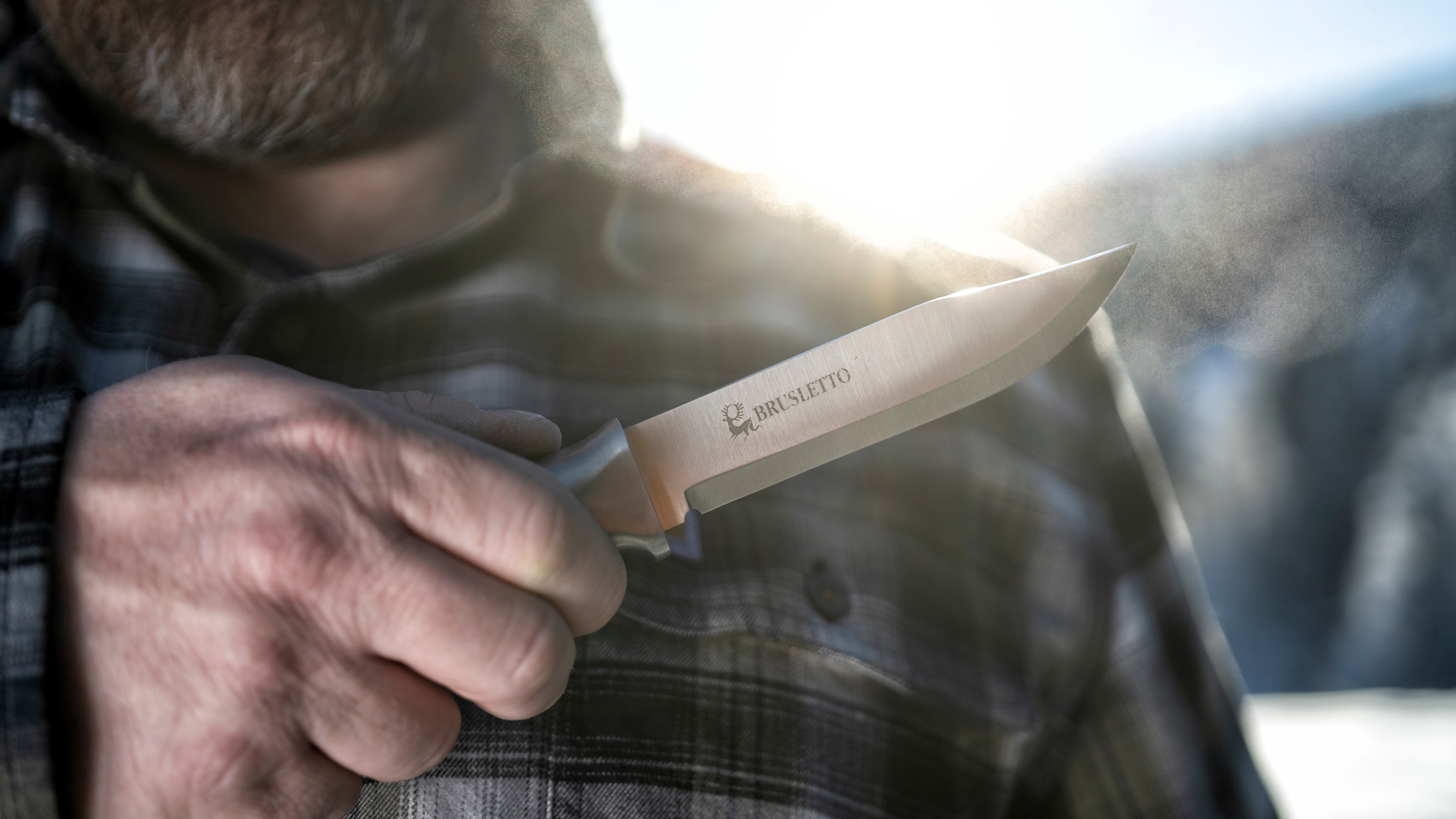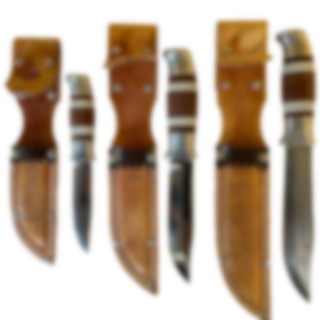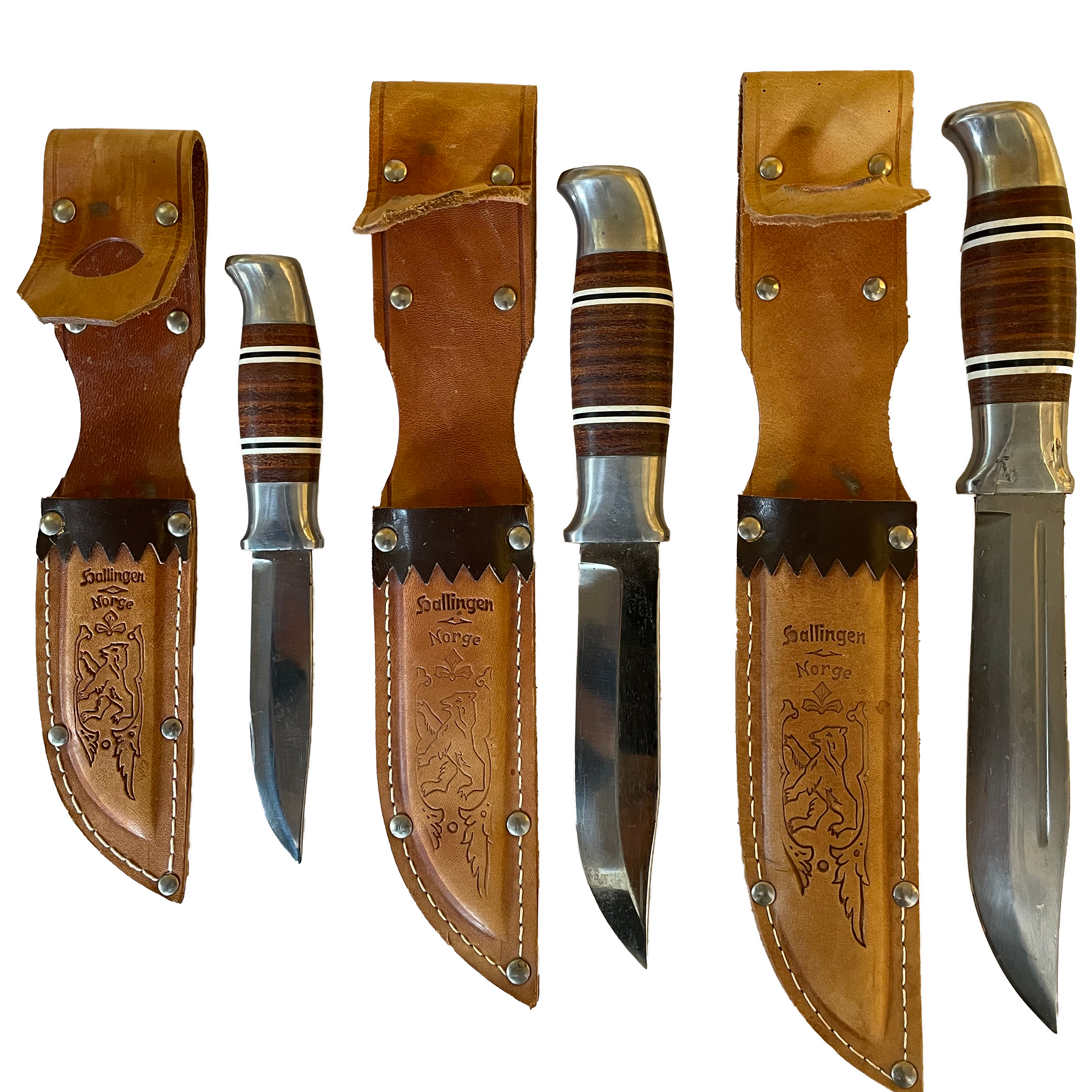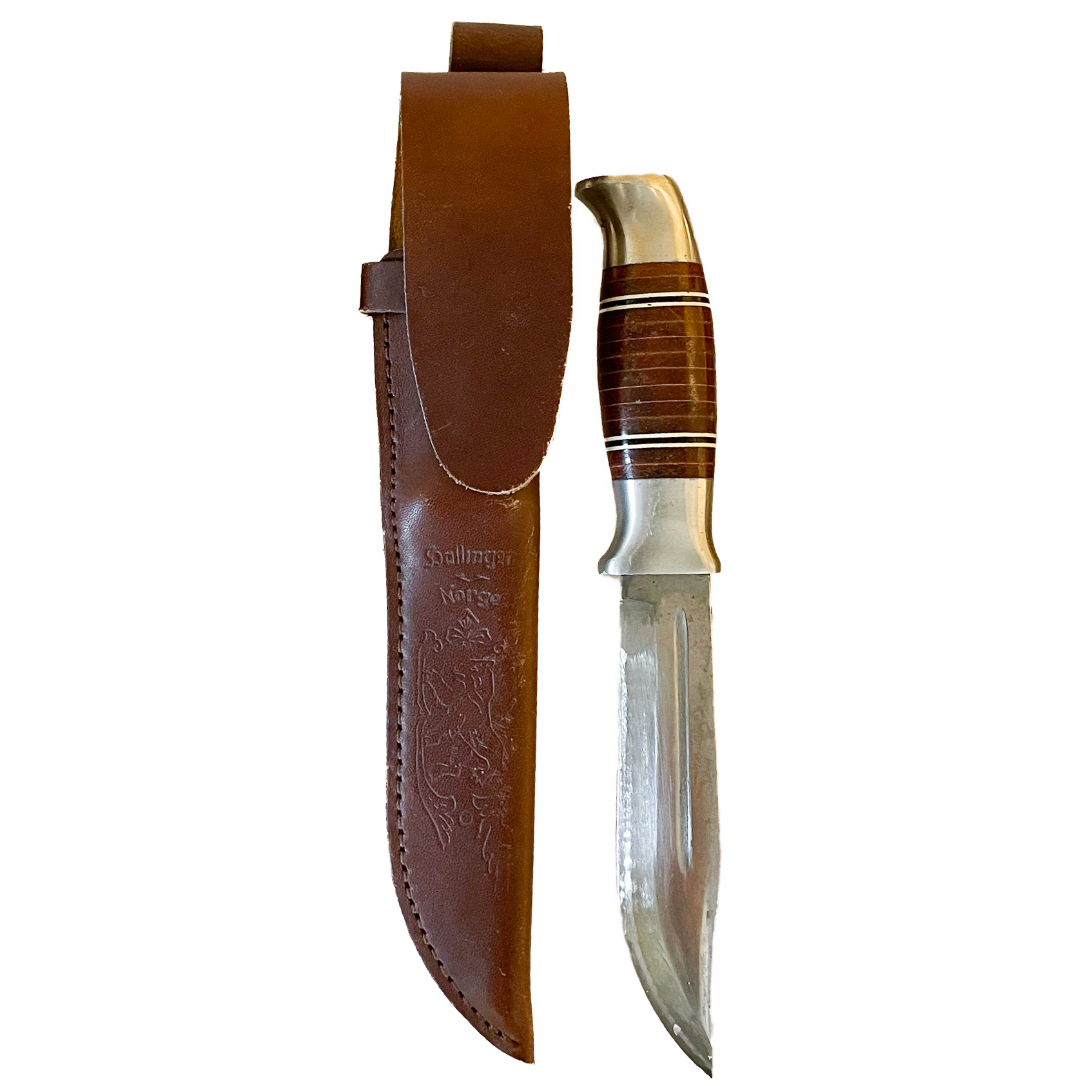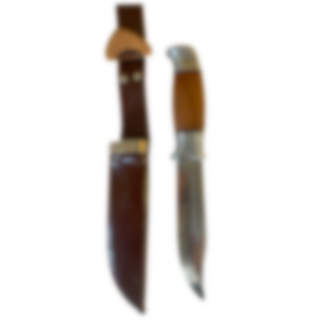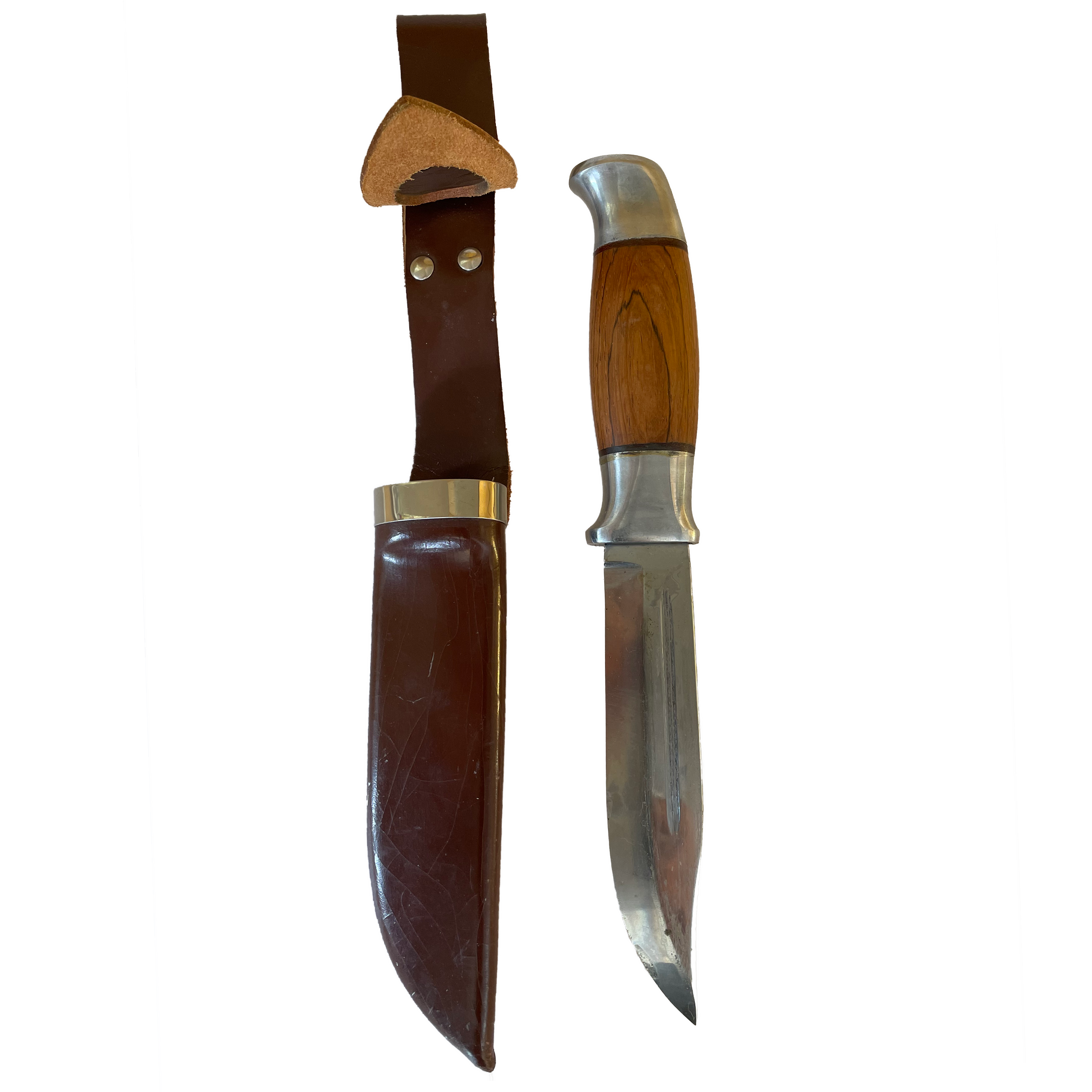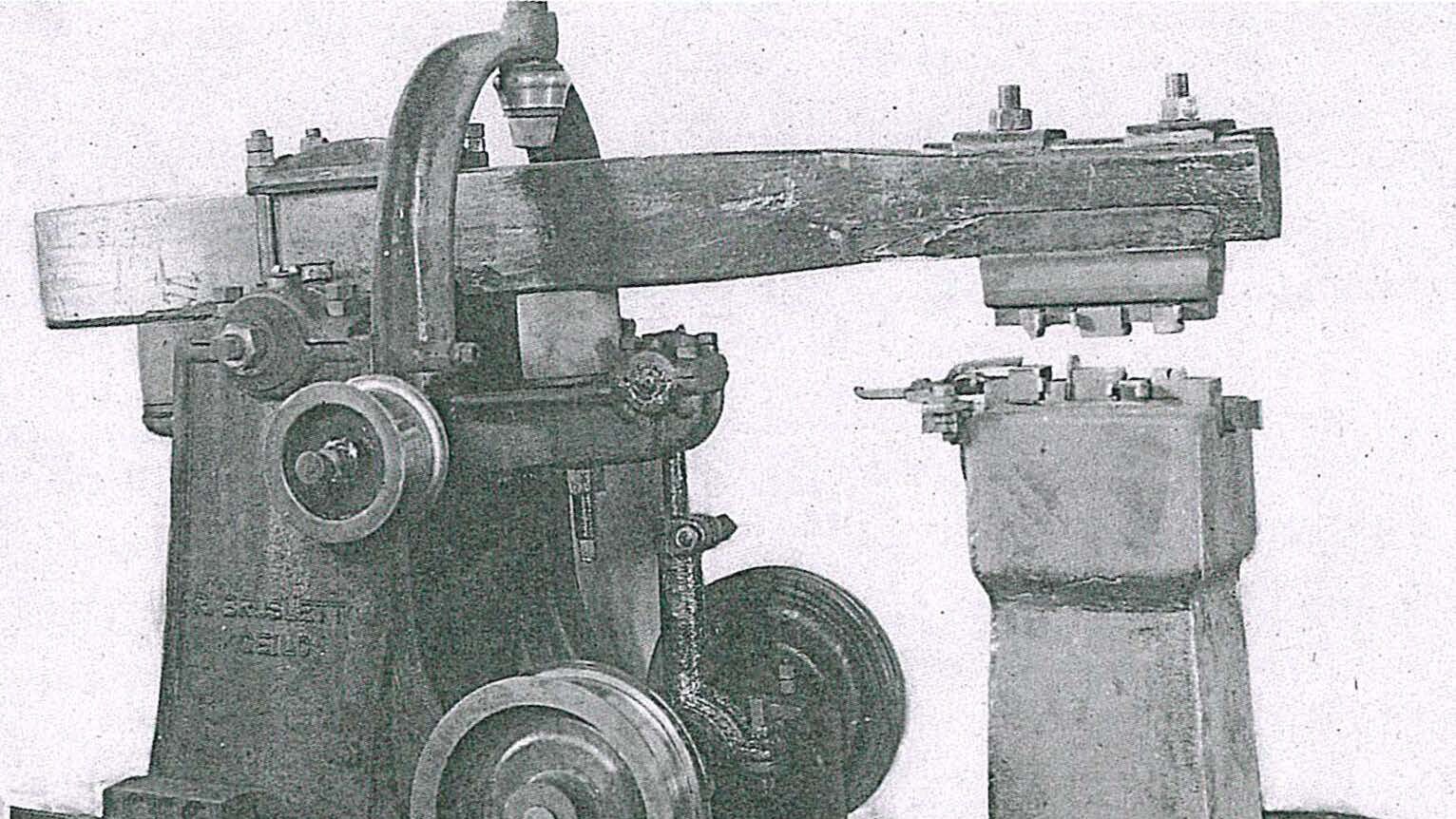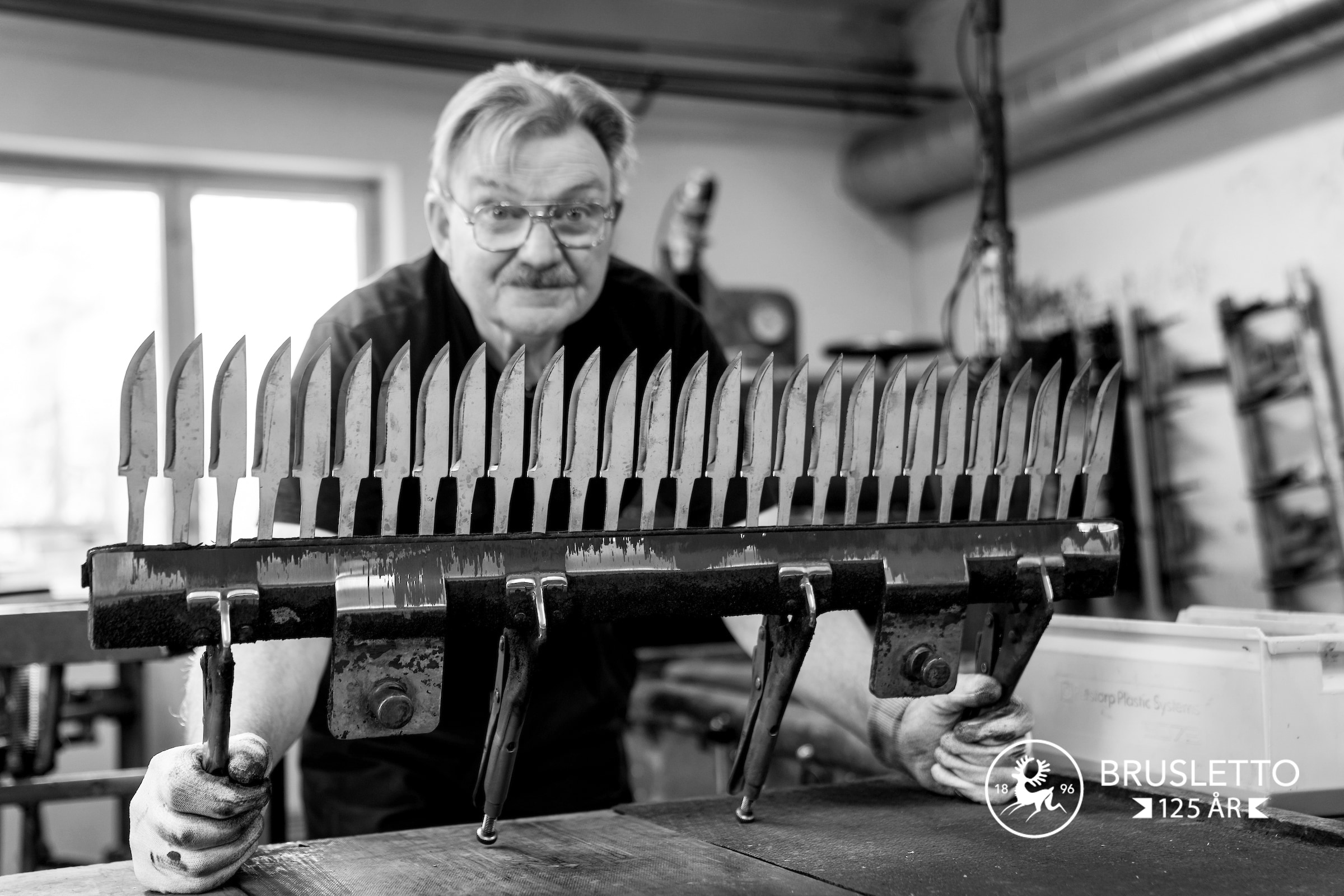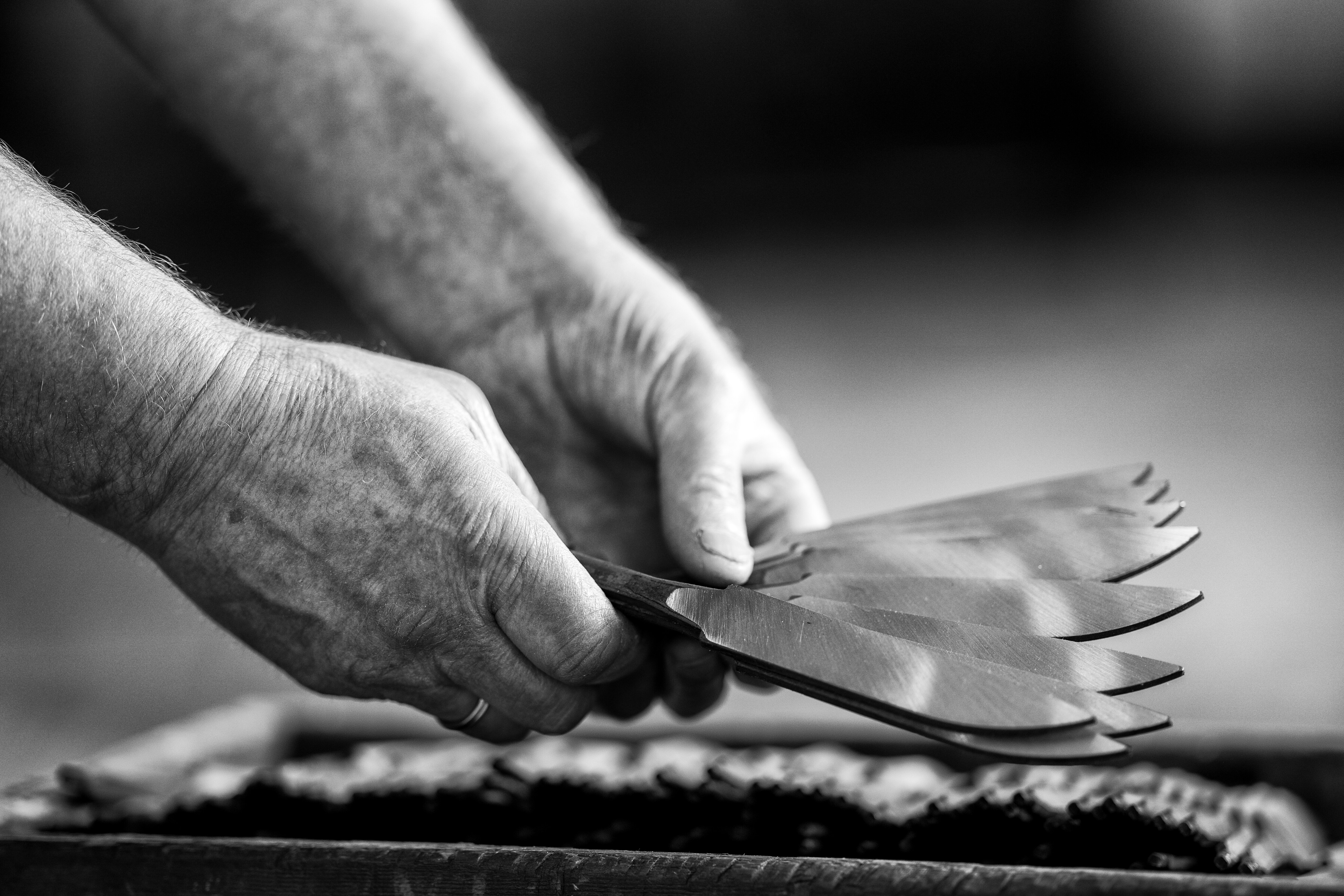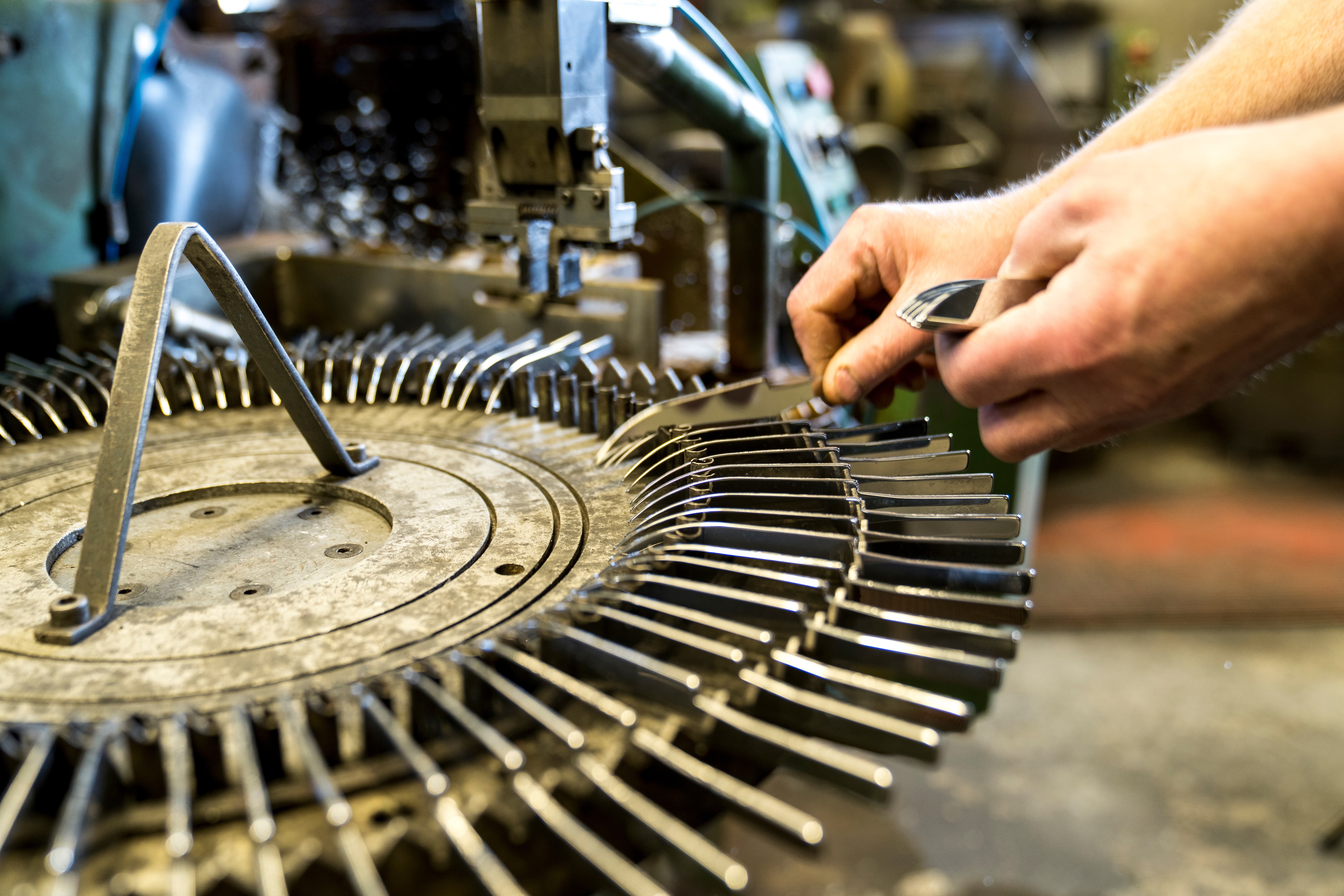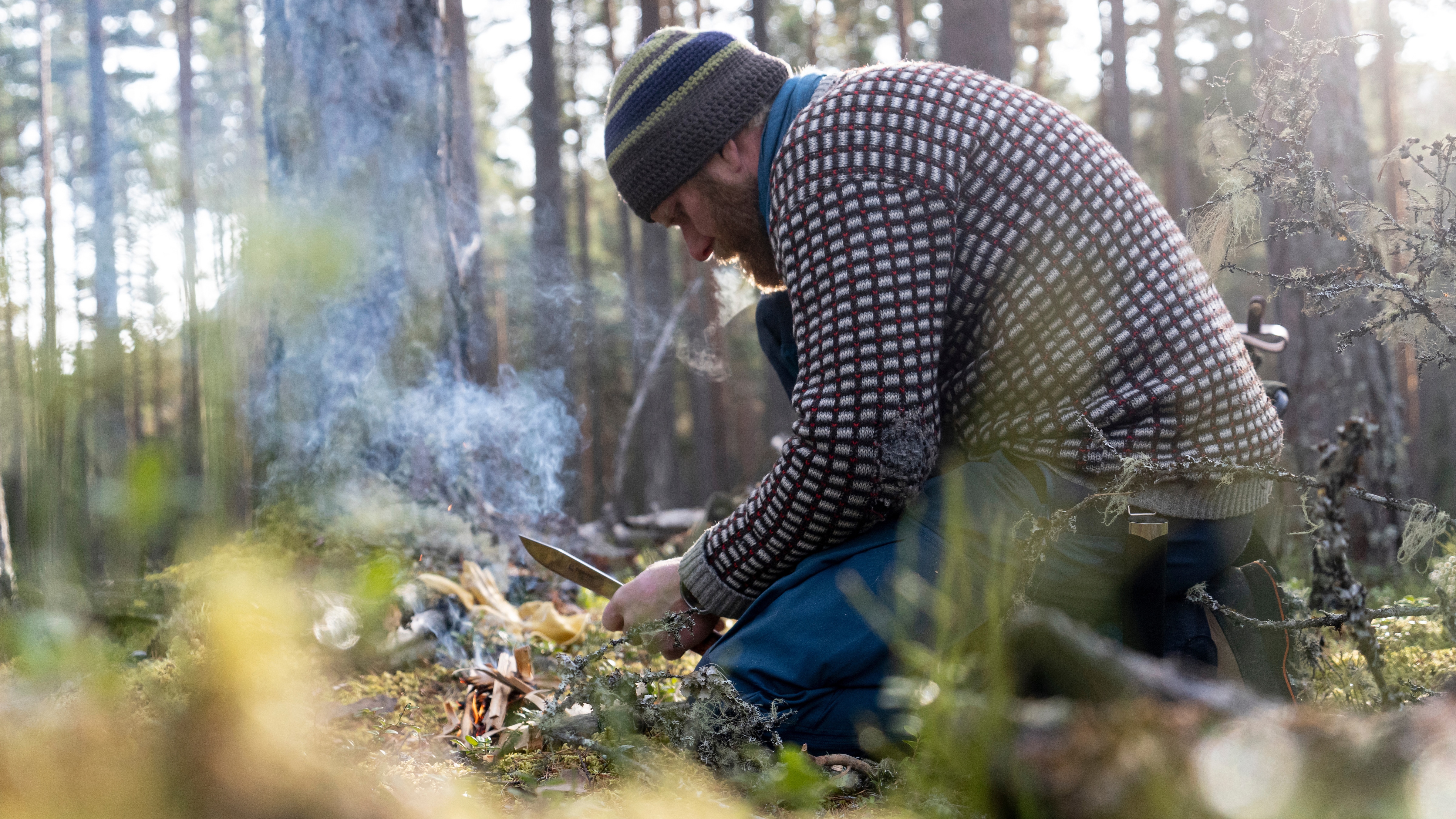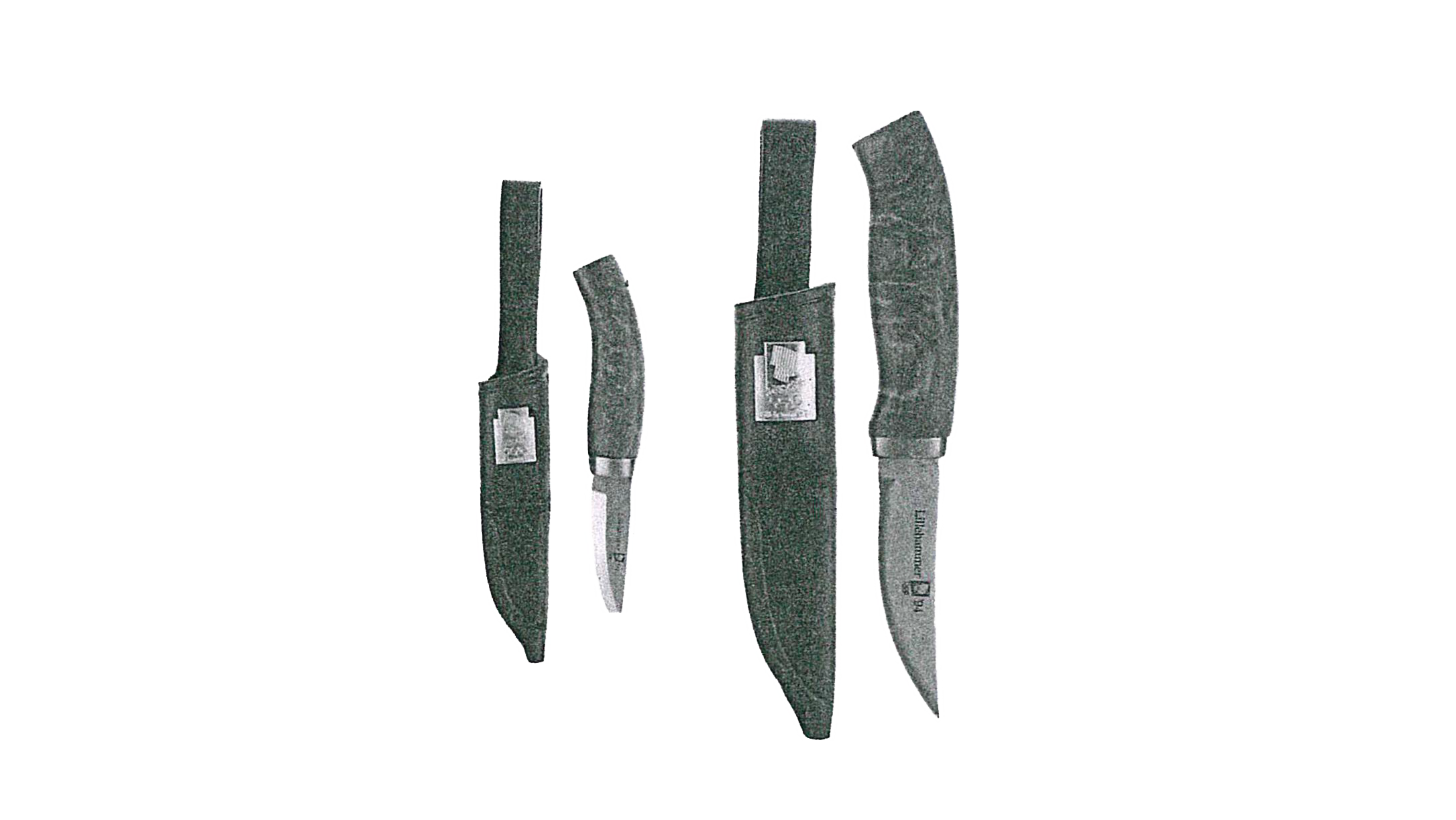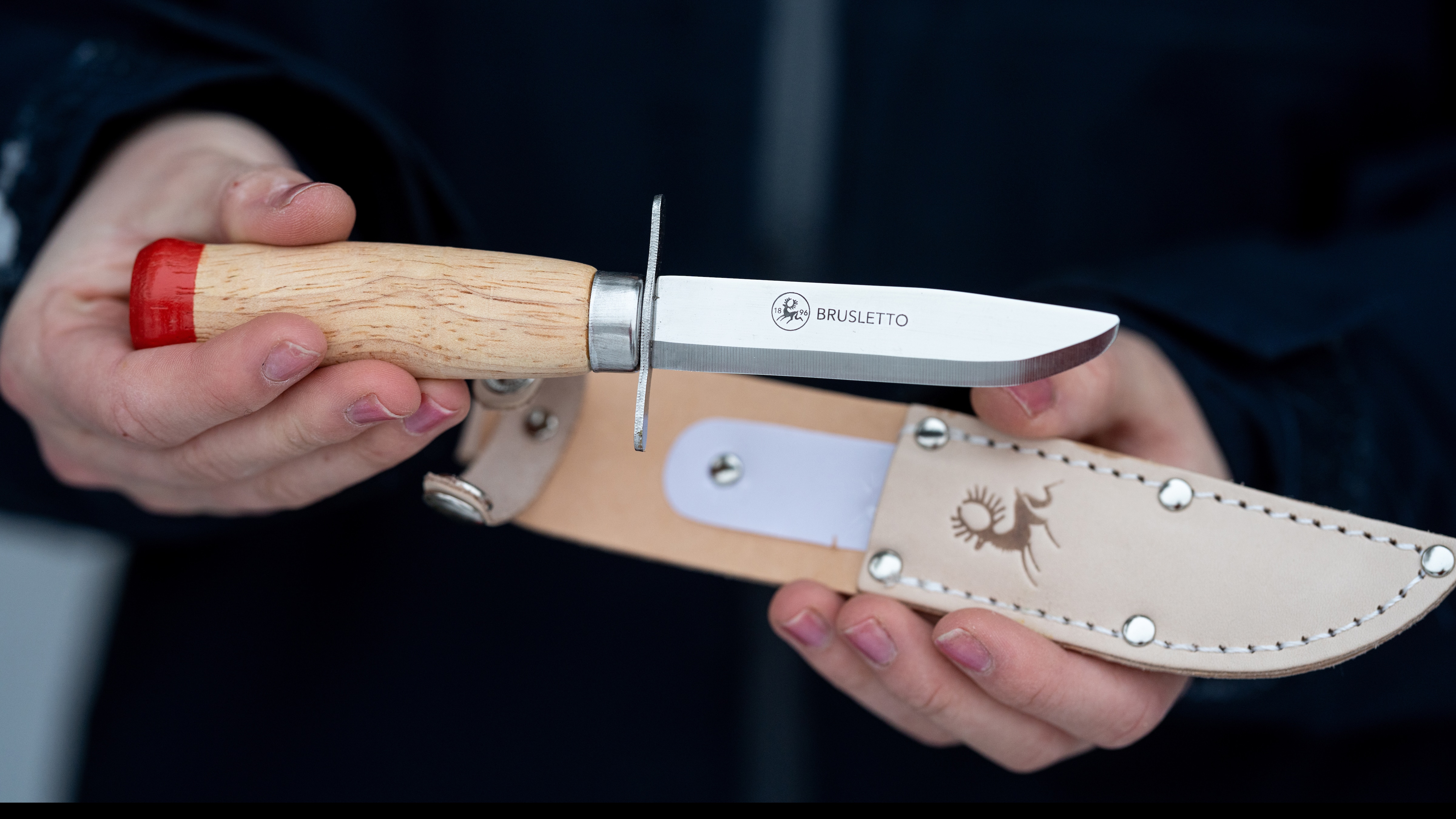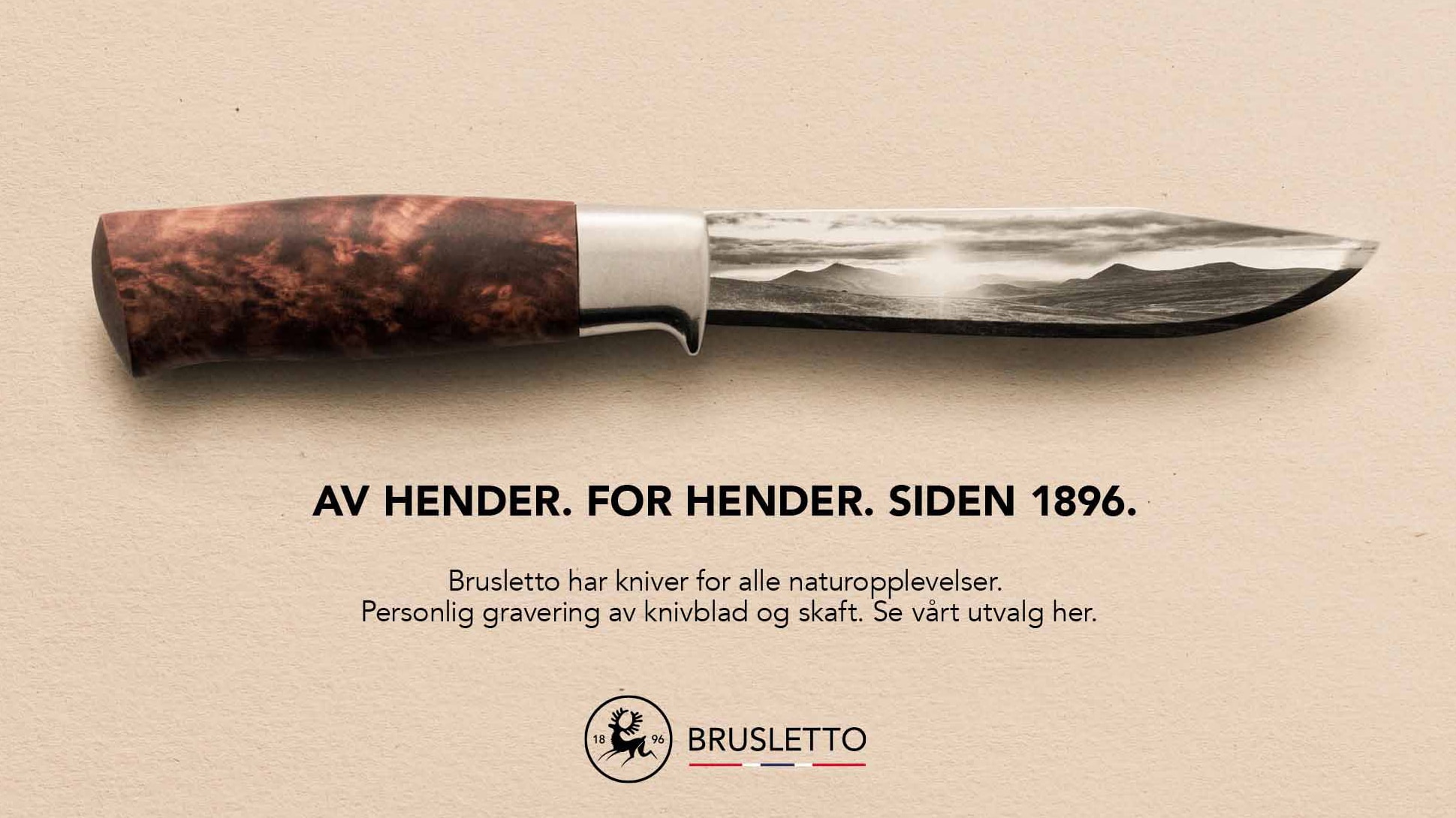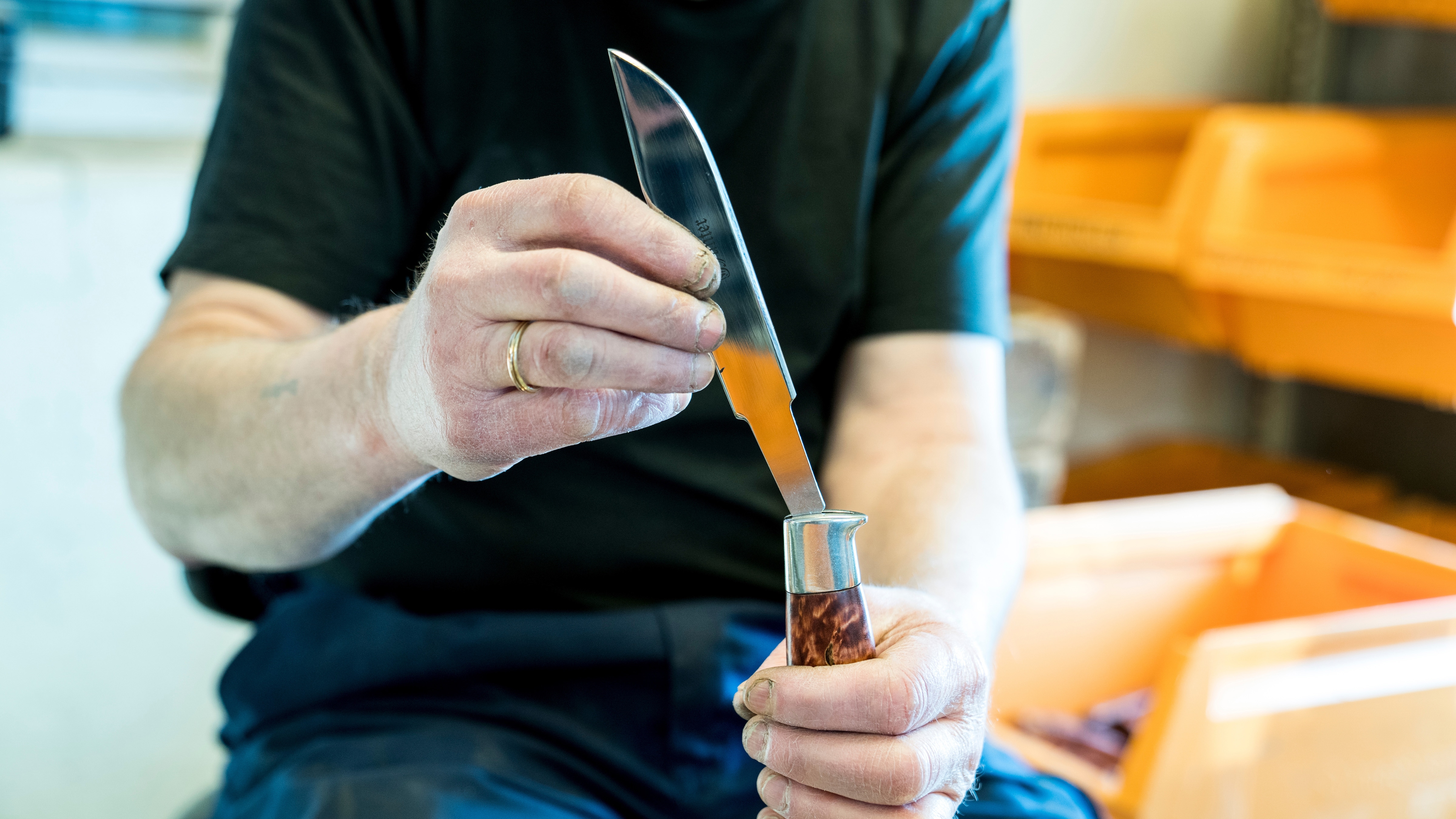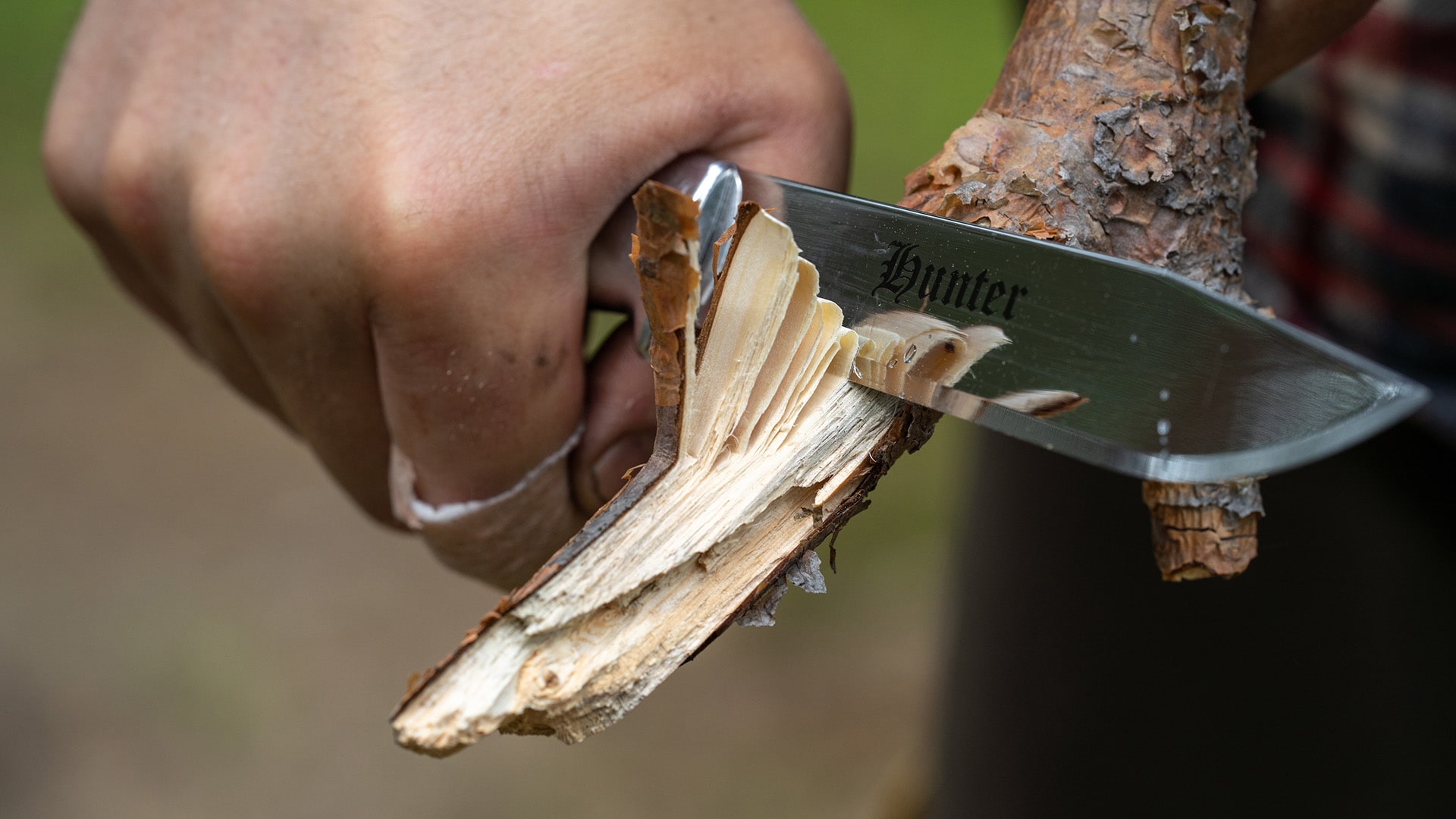Our History
History of the Hallingen
In 1947, the first Halling knife was launched. It had a leather handle and a leather sheath. When this knife was introduced, it immediately became a success. The knife was made with a strong and solid blade and also featured a full tang. The handle was made with an aluminum bolster, followed by many leather discs (in different colors), and the handle was finished with a bolster (end plate). The knife stood out from other Brusletto knives as the blade was thicker.
The leather used in the handle of the Hallingen came from surplus from local shoe factories. At that time, there were many shoe factories in Norway. The sheath of the Hallingen was also unique because it locked the knife to the sheath with a loop over the handle. New sheaths were made from the early 1990s (flip sheath) until the phase-out of the Hallingen in 1996.
How many Hallingen variants are there?
Hallingen was originally made in 3 variants. The regular Halling was launched first. Then Halling Large was launched, and finally, we launched Halling Small (which was only on the market for a couple of years). All the latter models were made with handles with leather discs. Halling is often also referred to as Hallingen.
Hallingen in All Sizes
Hallingen with Flip Sheath
Hallingen with Mahogany Handle
Blade with Blood Groove
The knife also had a blade with a so-called "blood groove." The blood groove was a channel along the length of the blade. The name comes from the fact that blood often collected in the groove during slaughter. The blood groove was later phased out as the blade tended to break more often with it than without. This was because the hardening in the thin part of the blade made it brittle. The blood groove was a feature of the knives from the 1960s until the early 1990s. The blade was 4mm thick, and all these models were produced in Campton steel. It was a strong quality steel that was easy to sharpen and held its sharpness for a long time. In the early 1980s, we stopped using this steel quality. The reason for discontinuing this steel was that it began to rust and required oiling. Now we use 440C steel in both Bamsen and Storbukken.
New Models
Demand changed, and we had less and less access to leather from shoe factories in Norway. Demand for the Hallingen decreased, and it was therefore removed from the range in 1988. A knife called Bamsen was then developed in 1988. It was similar to the original Hallingen (regular), but had a wooden handle instead of leather discs in the handle. It was made of mahogany wood from 1988 to 1990 before being made with curly birch until 2012. From 2012 to 2020, Bamsen was made with olive wood in the handle. This variant of Bamsen is now called Bamsen Nordic. Since 2020, we have returned to our roots and made it again in curly birch, which we believe is the finest.
In 2007, Storbukken was launched, also with a handle in curly birch. Storbukken was made in the same size as the large Hallingen.


